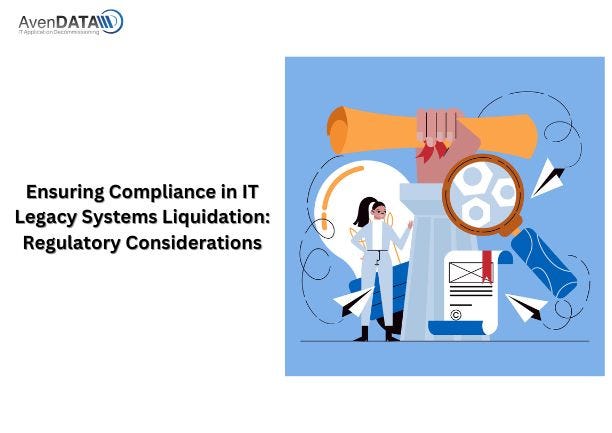Ensuring Compliance in IT Legacy Systems Liquidation: Regulatory Considerations

In today’s dynamic business environment, companies often undergo changes that require them to liquidate their IT legacy systems. Whether it’s due to mergers, acquisitions, restructuring, or technological upgrades, the process of liquidating IT assets requires careful attention to regulatory compliance. Failure to comply with relevant laws and regulations can lead to legal liabilities, financial penalties, and damage to the organization’s reputation. Therefore, it’s crucial for businesses to understand and address the regulatory considerations involved in IT legacy systems liquidation. Let’s explore some key regulatory factors that organizations should consider to ensure compliance during the liquidation process.
1. Data Privacy Regulations: One of the primary regulatory considerations in IT legacy systems liquidation is data privacy. Various regulations, such as the General Data Protection Regulation (GDPR) in the European Union, the Health Insurance Portability and Accountability Act (HIPAA) in the United States, and the Personal Data Protection Act (PDPA) in Singapore, govern the collection, storage, and processing of personal data. Organizations must ensure that sensitive data stored in legacy systems is handled and disposed of in accordance with these regulations to protect individuals’ privacy rights.
2. Intellectual Property Protection: Intellectual property (IP) assets, including patents, trademarks, copyrights, and trade secrets, are valuable assets that must be protected during IT legacy systems liquidation. Organizations should implement measures to safeguard their IP assets from unauthorized access, disclosure, or misuse. This may include restricting access to proprietary software code, encryption of confidential documents, and contractual agreements with third-party vendors to protect trade secrets.
3. Environmental Regulations: The disposal of IT hardware and electronic equipment during legacy systems liquidation may be subject to environmental regulations governing e-waste management and recycling. Organizations must ensure compliance with these regulations to minimize the environmental impact of IT asset disposal. This may involve proper recycling of electronic waste, disposal of hazardous materials, and adherence to local laws regarding electronic waste disposal.
4. Financial Reporting Requirements: Financial reporting requirements, such as those outlined in the Generally Accepted Accounting Principles (GAAP) or International Financial Reporting Standards (IFRS), dictate how organizations report the value of their assets, including IT systems, in their financial statements. Organizations must accurately account for the value of IT assets being liquidated and properly disclose any related financial transactions or liabilities in their financial reports.
5. Employment Laws and Regulations: IT legacy systems liquidation may involve workforce restructuring, including employee layoffs or transfers. Organizations must comply with applicable employment laws and regulations governing employee termination, severance pay, notice periods, and employee rights during the liquidation process. Failure to adhere to these laws can result in legal disputes, lawsuits, and reputational damage.
6. Contractual Obligations: Organizations must review and assess any contractual obligations related to their IT legacy systems, including agreements with software vendors, service providers, and clients. Contracts may contain clauses specifying data retention requirements, termination procedures, and intellectual property rights that must be considered during the liquidation process. Organizations should ensure compliance with contractual obligations to avoid breach of contract claims and legal disputes.
7. Records Retention Requirements: Certain industries and jurisdictions may have records retention requirements that dictate how long organizations must retain certain types of records and data. Organizations should review applicable records retention laws and regulations to determine their obligations regarding the retention and disposal of data stored in IT legacy systems. Properly managing records retention ensures compliance with legal requirements and reduces the risk of non-compliance penalties.
In conclusion, ensuring compliance with regulatory requirements is essential for organizations undergoing IT legacy systems liquidation. By understanding and addressing key regulatory considerations such as data privacy regulations, intellectual property protection, environmental regulations, financial reporting requirements, employment laws, contractual obligations, and records retention requirements, organizations can mitigate legal and financial risks associated with the liquidation process. Partnering with experienced professionals and legal advisors can help organizations navigate complex regulatory landscapes and ensure compliance throughout the liquidation process.
